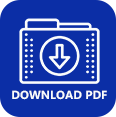Content
1. Standards for replacing the cylinde
(1). Gas leakage
Obvious leakage: A leaking sound can be heard at the piston rod or end cap of the cylinder, or bubbles appear after applying soapy water (especially for pneumatic systems).
Pressure test failure: After the air source is turned off, the cylinder pressure drops rapidly (such as a pressure drop of >10% within 5 minutes).
(2). Abnormal movement
Stuck or crawling: The piston movement is not smooth, and there are pauses and jitters (possibly caused by wear of the seal ring or damage to the cylinder barrel).
Insufficient output: The cylinder thrust/pull force drops significantly and cannot drive the load (after excluding the factor of insufficient air pressure).
(3). Visible physical damage
Piston rod scratches or bends: There are deep scratches (>0.1mm) or straightness deviation >0.2mm/m on the piston rod surface.
Cylinder inner wall scratches: Longitudinal grooves appear on the inner wall (can be checked with an endoscope), resulting in seal failure. End cover cracking or thread damage: Cracks in the stress-bearing parts or bolt hole slippage affect the sealing performance.
2. Recommended preventive replacement standards
(1). Aging of seals
Hardening/cracking of seal rings: Disassembly and inspection reveal that the rubber seal ring has lost its elasticity and surface cracks (aging signs).
Frequent replacement of seals: If the seals of the same cylinder are replaced more than 2 times within 1 year, it means that the cylinder body is worn.
(2). Performance degradation
Decrease in operating speed: Due to internal leakage or increased friction, the operating speed is reduced by more than 20% (under fixed air pressure conditions).
Failure of the buffer function: Severe impact at the end of the cylinder stroke and ineffective adjustment of the buffer valve.
(3). Service life and environment
Excessive service: Continuous use exceeds the design life (the service life of general industrial cylinders is 5 to 10 million times, and is shortened to 2 million times in high-frequency or harsh environments).
Corrosive environment: Exposure to acid mist or salt mist causes corrosion of the cylinder body/piston rod (rust area > 30%).
3. Inspection Method
Manual Test: Disconnect the load and manually push the piston rod to feel for uniform resistance (abnormal resistance may indicate an overtight seal or cylinder deformation).
Endoscopic Inspection: Insert an endoscope through the air port to observe wear on the cylinder inner wall and piston sealing surface.
Leak Test: Seal one air port, apply pressure, and observe for leaks from the other side (to test piston tightness).
4. Replacement Operation Guidelines
Disassembly Precautions: Mark the cylinder installation direction to avoid reverse installation; clean the piping to prevent contamination of the new cylinder.
New Cylinder Installation: Ensure the piston rod is coaxial with the load (deviation <0.1mm/m) to avoid lateral forces. Operate at a low speed during initial operation to ensure adequate lubrication of the seal.

 简体中文
简体中文 English
English Русский
Русский.png?imageView2/2/w/326/h/326/format/jpg/q/75)

.png?imageView2/2/w/326/h/326/format/jpg/q/75)


.png?imageView2/2/w/326/h/326/format/jpg/q/75)
.png?imageView2/2/w/326/h/326/format/jpg/q/75)

.png?imageView2/2/w/326/h/326/format/jpg/q/75)


